Bike Perfect Verdict
A worthy upgrade over XT for not a huge amount more.
Pros
- +
Light
- +
Low, wide contact patch
- +
Buttery-smooth engagement
- +
Best SPD pedal for mud clearance
Cons
- -
Moderately expensive
Why trust BikePerfect
I thought I must have misremembered splashing out on a pair of XTR pedals back in the early 2000s because I couldn’t see them anywhere in my collection - until I realized those old PD-M959s were still in daily service on one of my MTBs. In a typically understated Shimano way, they never actually had any XTR branding.
The places where the shoe contacts the aluminum body are a bit worn and wobbly now, but incredibly the bearings still run beautifully, despite absolutely zero maintenance.
For information on Bike Perfect's testing procedures and how our scoring system works, see our how we test page.
The latest version is the XTR PD-M9100 and it's sleeker, lower, and lighter. It also has better mud clearance, but at the heart of it is still the crisp buttery-smooth engagement expected from XTR. It’s also moved on in small but useful ways from its predecessor, meaning it's still one of the best mountain bike clipless pedals around.
We also recently pitched the XTR against its budget sibling the Shimano M520 to see how they matched up and there were some interesting comparisons.
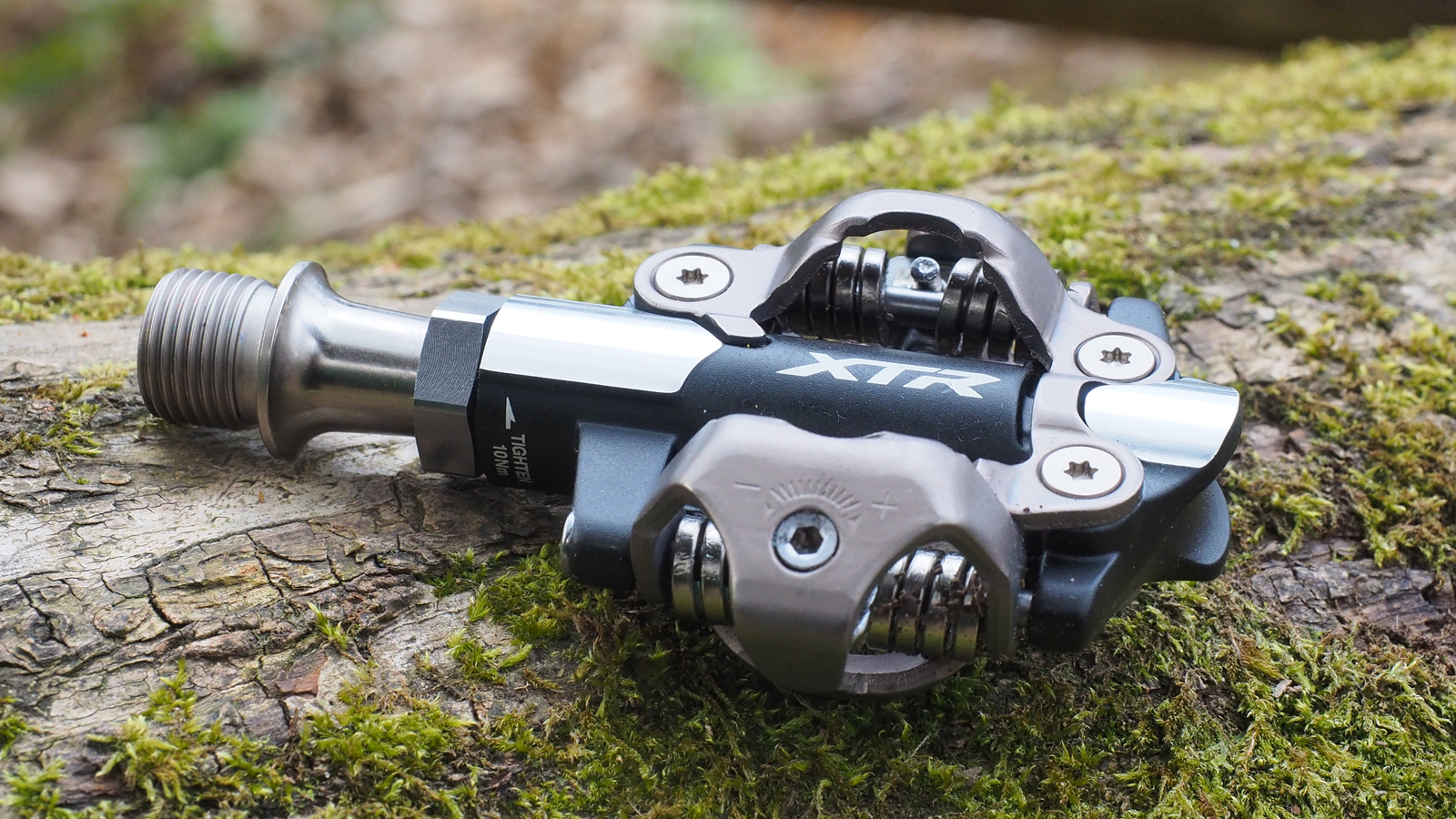
Design and aesthetics
The PD-M9100 has a sleeker look than its sibling SPD pedals, with slightly lower, slightly longer, and slightly wider dimensions. Both ends of the pedal body have been slimmed right down to only just cover the various bolts that fix into them.
The shoe contact patch at each end of the axle body is long and rounded and highly polished. On the inboard side, that contact patch extends further along the axle than normal. The rounded contact patch is the main change over the previous PD-M9000 and is meant to stop mud from becoming trapped between the shoe and the pedal, fouling clip-in.
Other than that, you have the familiar double-sided clip-in mechanism, with a fixed cleat housing plate at the front and a spring-tensioned binding plate at the back, which you can adjust for tension with a hex key.
The PD-M9100s come with the same hard-wearing cleats as all Shimano’s other SPD shoes, giving the same four degrees of float and 13-degree release angle.
Inside, you have easily maintainable sealed cartridge bearings. The two sets of bearings are set further apart in the longer axle body for better load distribution, and the seals are improved over the previous version.
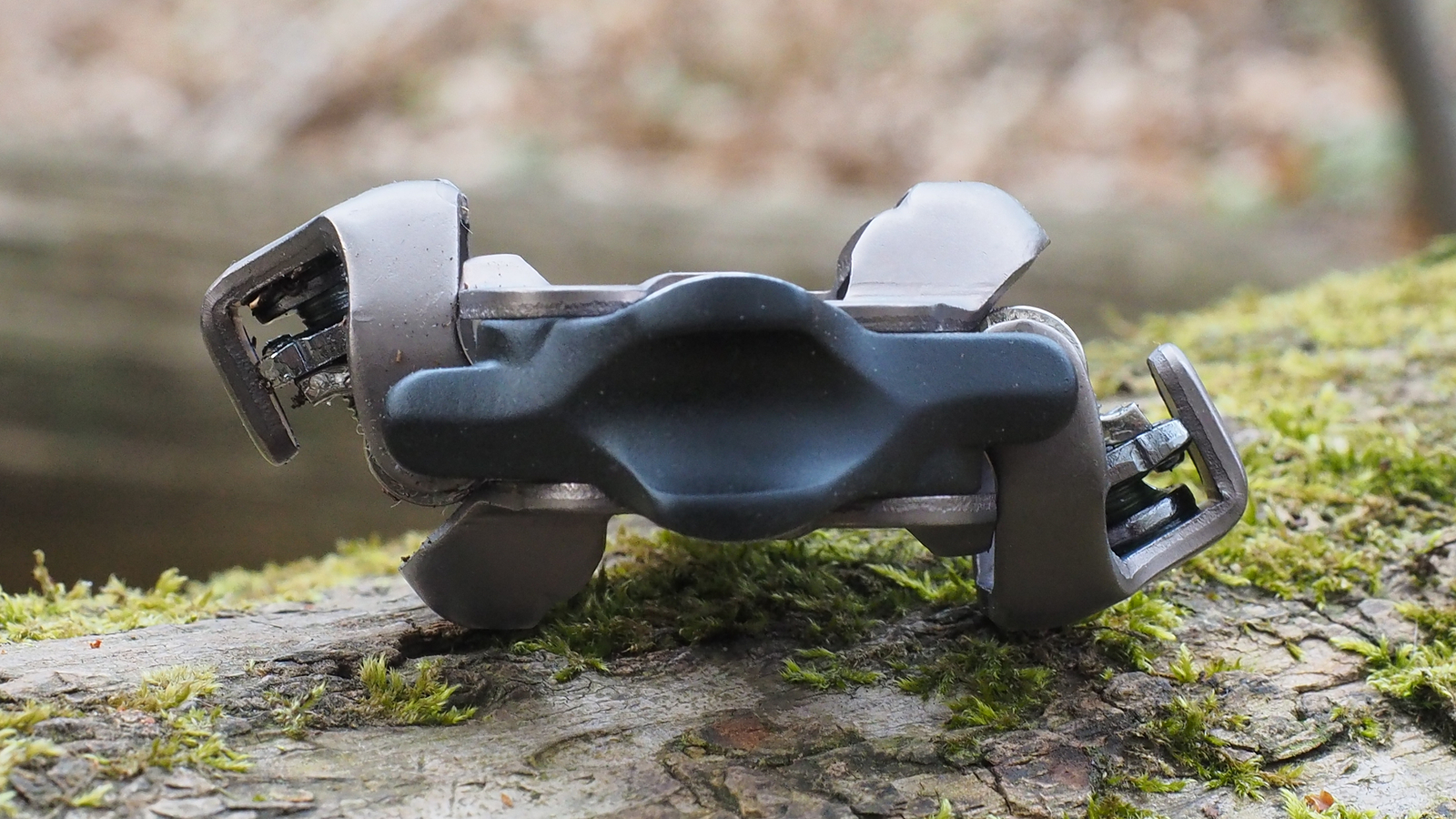
Specifications
There’s quite a significant set of performance upgrades between the XT and XTR pedals, for the relatively small uptick in price.
The stack height is significantly lower — at 8.1mm it’s the lowest in our current batch of test pedals. This is partly achieved by the cleat binding having been offset further backwards, which has the additional benefit of releasing more space between the spring and the axle body for mud to clear through (a 6.4mm gap vs 4.6mm).
The shoe contact area is wider too, for more stability — it’s 13mm long on the outboard end and 20mm on the inboard, going much further inwards along the axle, vs 12 and 13mm on Shimano's XT pedal. It’s also rounded and polished for better mud clearance than the flat surface on the XT.
The XTR pedal body is forged (rather than die-cast), which in principle makes for a stronger unit and presumably helps to enable the more minimalist design, but if you know of either pedal body flexing or breaking, please let us know.
The XTR pedal comes in a standard length axle and a minus-3mm option. On the standard version, the center of the pedal body, and the outboard end of the pedal, sit about 1.5mm further out than on an XT pedal
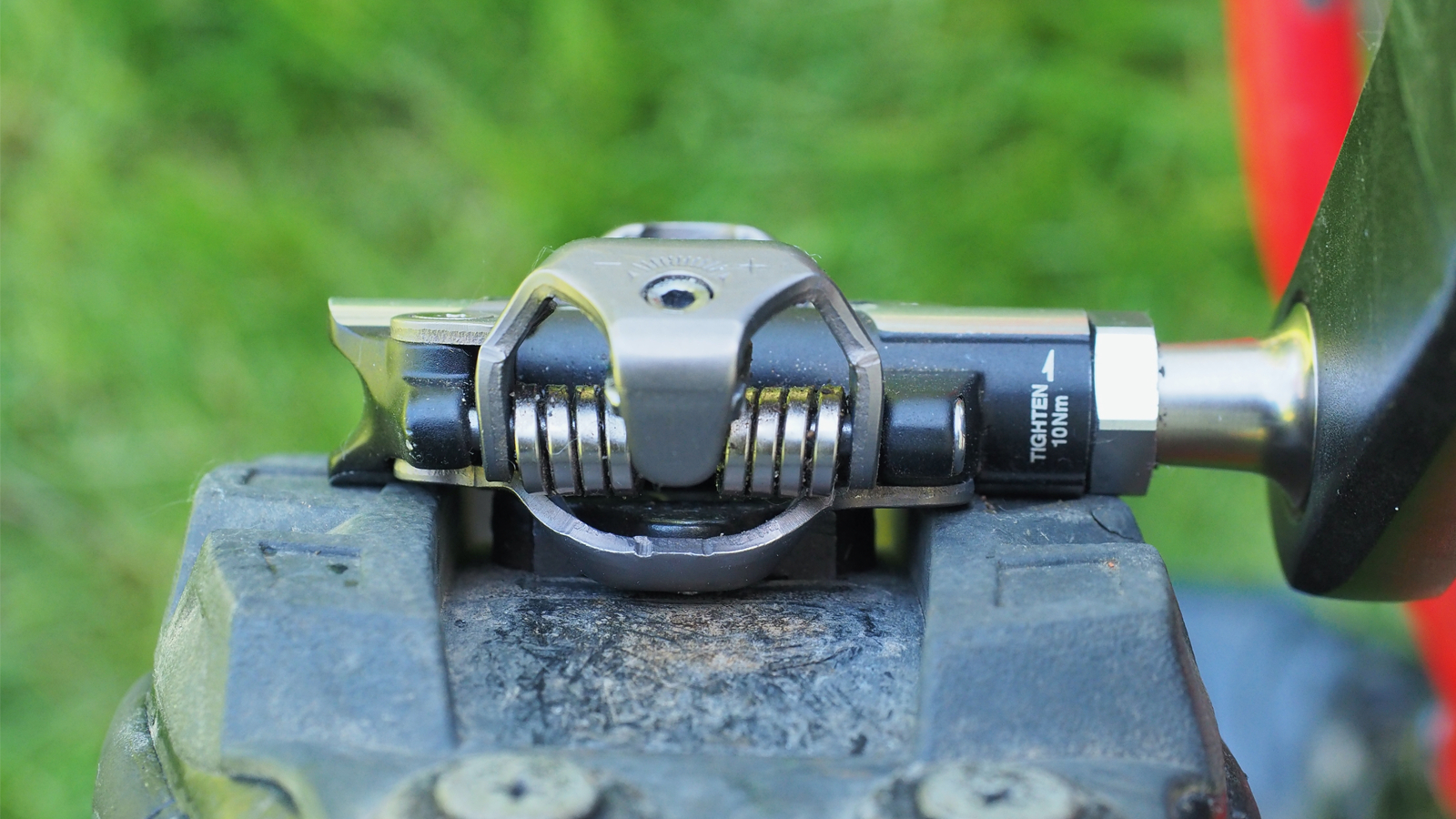
Performance
The PD-M9100s have a beautifully smooth, yet definite clip and release action, and were stable making them easy to ride. When tested back to back against the XT pedals I’d be exaggerating if I said I distinctly noticed the effect of the stack height, but I did notice that the rounded shoe contact patch, while mainly designed to let mud escape, also allowed the foot and lower leg to move more freely within the four degrees of float with each turn of the pedal.
When the cyclocross season starts, the XTRs will be top of my list for the extra internal mud-clearing space and the rounded pedal body.
Two very minor gripes came up in my testing. The shoe cleat quickly started to wear through the very end of the polished contact patch on the inboard side. And I noticed that the bearings on one of the pedals had a very slight roughness to them, which I’d probably have sent back to the shop for a perfectly smooth pair, had I bought them.
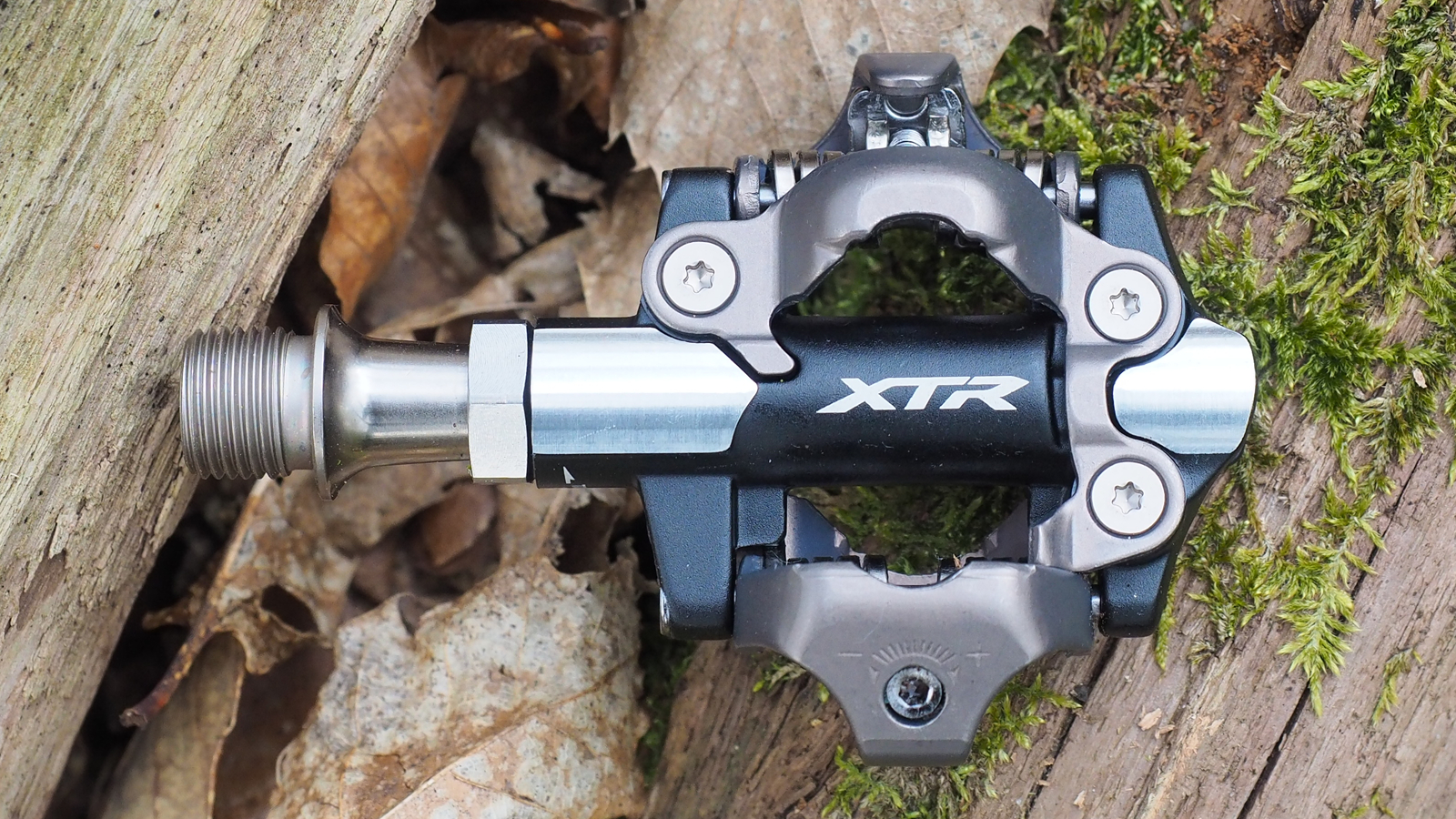
Verdict
If your wallet allows it, the XTRs are a significant upgrade over the XTs. With a wider contact patch, better mud clearance, lower weight, and a lower stack height, it brings the race performance you'd expect from Shimano's XTR pedals.
Tech Specs: Shimano XTR PD-M9100 pedal
- Price: $179.99 / £139.99
- Colors: Black
- Weight: 312g (pair)
- Float: 4 degrees
- Release angle: 13 degrees
- Key materials: Forged aluminum body, chrome-moly spindle, sealed bearings
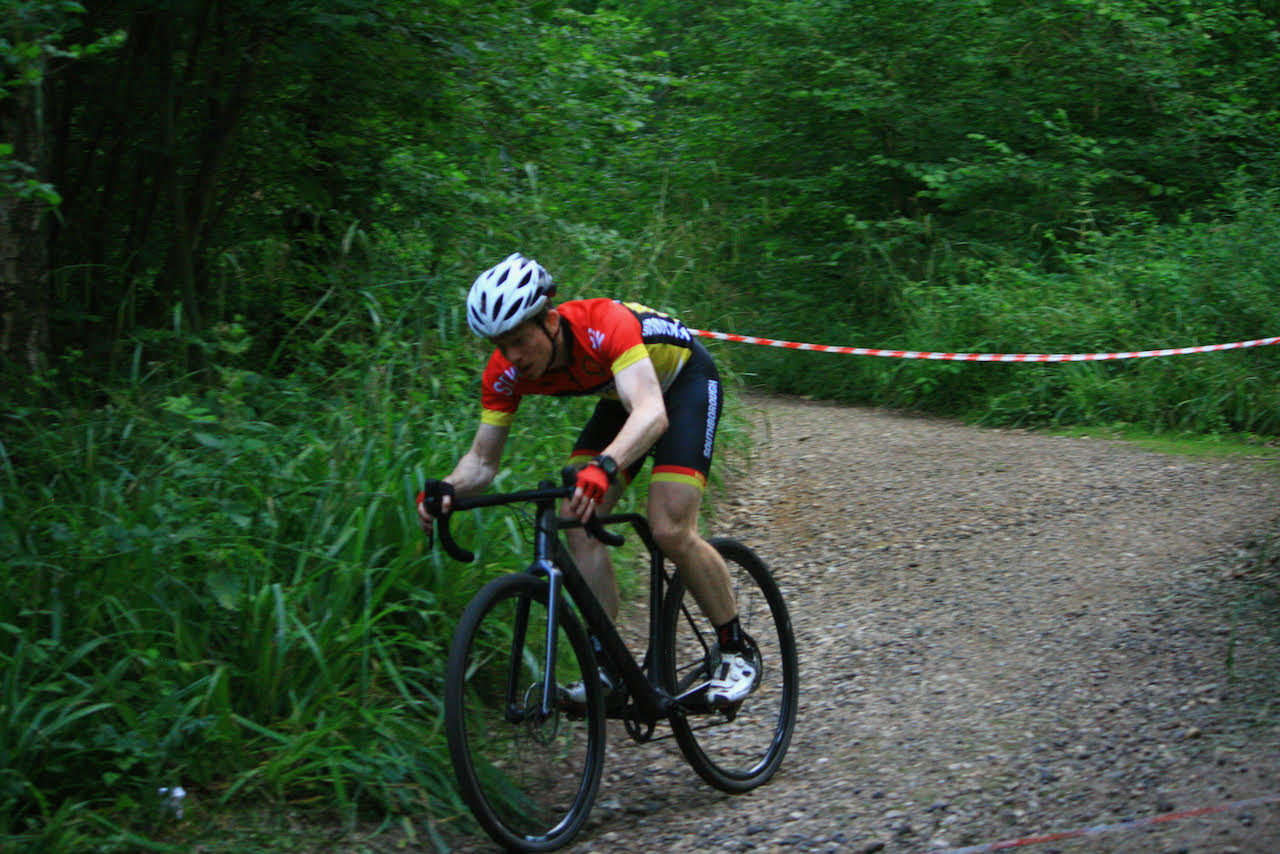
Sean has old school cycle touring in his blood, with a coast to coast USA ride and a number of month-long European tours in his very relaxed palmares. Also an enthusiastic midpack club cyclocross and XC racer, he loves his role as a junior cycle coach on the Kent/Sussex borders, and likes to squeeze in a one-day unsupported 100-miler on the South Downs Way at least once a year. Triathlon and adventure racing fit into his meandering cycling past, as does clattering around the Peak District on a rigid Stumpjumper back in the day.
Height: 173cm
Weight: 65kg
Rides: Specialized Chisel Comp; Canyon Inflite CF SLX; Canyon Aeroad; Roberts custom road bike

